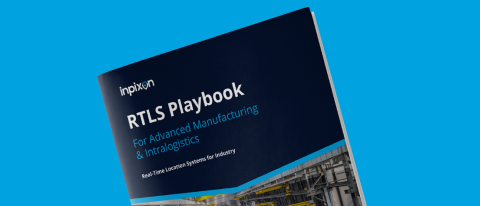As technology continues to advance, so too do the ways in which we can track and manage assets. Indoor asset tracking is one area that has seen significant growth in recent years, with businesses and organizations looking for ways to improve efficiency and reduce costs. In this blog, we will explore three real-world examples of indoor asset tracking and the ways in which RTLS solutions are being used to streamline operations and drive business success.
1. Tool and Equipment Tracking
Tracking tools and equipment is critical for asset tracking in buildings as it reduces the time required to locate them in emergencies and lowers maintenance costs by monitoring usage history. Inpixon's IoT technology revolutionizes tool tracking with real-time location displays and alerts that enable workers to quickly locate tools, eliminate bottlenecks, and minimize downtime. With real-time notifications when tools leave their assigned area, tools can be returned quickly, reducing downtime and maximizing productivity.
Theft protection and security:
With real-time tracking, companies can be alerted immediately if expensive tools or equipment are moved without authorization or removed from the designated area. This increases security and reduces losses due to theft. The precise location of tools and equipment enables an immediate response, significantly reducing the risk of theft or misuse. In addition, security managers can view detailed reports on all device movements, which helps to identify patterns and potential vulnerabilities in the security infrastructure. This data is not only useful for prevention, but also for identifying and tracing stolen items. The integration of alarm functions into the tracking system ensures that any unauthorized movement is reported immediately so that security measures can be taken immediately. Overall, real-time tracking contributes significantly to creating a safer working environment and protects valuable company resources.
Forklift tracking in a warehouse environment:
Forklift tracking in a warehouse environment is a modern technology that monitors the location and movements of forklifts in real time. This improves efficiency and safety in the warehouse as it enables the flow of materials to be tracked accurately, bottlenecks to be identified and forklift utilization to be optimized. Accidents and collisions can also be reduced thanks to real-time monitoring. The integration of UWB, Chirp, RFID and IoT sensors provides comprehensive insights and enables precise analysis of warehouse processes, resulting in better overall warehouse management.
2. Inventory Management
RTLS technology significantly enhances inventory management in warehouse settings by tracking the movement of goods and materials throughout the facilities. This capability enables warehouse managers to optimize inventory processes, maintain optimal stock levels, and effectively prevent stock-outs. By minimizing overstocking, RTLS helps reduce waste and associated costs. Additionally, the real-time visibility provided by RTLS improves efficiency by reducing search times and facilitating proactive management actions based on accurate location data.
3. Material Flow Optimization
Material flow control, material flow management, and material flow optimization are central aspects of intralogistics that can be significantly improved by the use of Real-Time Locating Systems (RTLS). RTLS, based on technologies such as UWB, Chirp, LiDAR, GPS, or WLAN, enables seamless monitoring and control of material flow within production facilities and warehouses. Real-time data allows companies to track the location and condition of goods and equipment, enhancing transparency, reducing errors, and ensuring quick responses to issues.
Material flow management encompasses the planning and optimization of material movements. RTLS data optimizes route planning, resource allocation, and inventory management. Key aspects of material flow management with RTLS include the dynamic allocation of resources like forklifts or storage locations and the continuous monitoring of inventory levels, enabling precise inventory control and restocking.
RTLS is applied in various areas of intralogistics, including goods receipt and dispatch, order picking, and production supply. Accurate tracking of goods upon arrival and dispatch enhances the efficiency and accuracy of these processes. Real-time location tracking accelerates the picking process and reduces error rates. Additionally, RTLS ensures timely and precise delivery of materials to production lines, preventing production downtime.
Material flow optimization aims to improve the overall movement of materials within the operation. With RTLS, companies can identify and eliminate bottlenecks, optimize inventory levels, and enhance the efficiency of the entire material flow. These optimizations lead to faster throughput times, lower operating costs, and overall improved performance of intralogistics processes.
Get Started
Overall, indoor asset tracking is becoming increasingly valuable for businesses and organizations to streamline operations. From intralogistics to manufacturing, this technology provides real-time information on the location and status of critical assets, enabling businesses to improve efficiency, reduce costs, and drive success. Through asset tracking technology, companies can optimize their operations and increase efficiency, which will ultimately improve their bottom line. As technology continues to evolve, we can expect to see even more innovative uses for indoor asset tracking in the future.
The landscape of indoor asset tracking is undergoing great growth and change, and these are just a few examples of how indoor maps and asset tracking are changing the way we live, work, and play indoors. Find out how to make your space a connected smart building with asset-tracking technology from Inpixon. Get started today.
This blog on indoor asset tracking first appeared on March 7th, 2019 and was updated to reflect new information on real word applications of indoor asset tracking on March 18th, 2024.


-3.png?length=1000&name=Inpixon%20LinkedIn%20Banner%20August%202025%20(2)-3.png)

